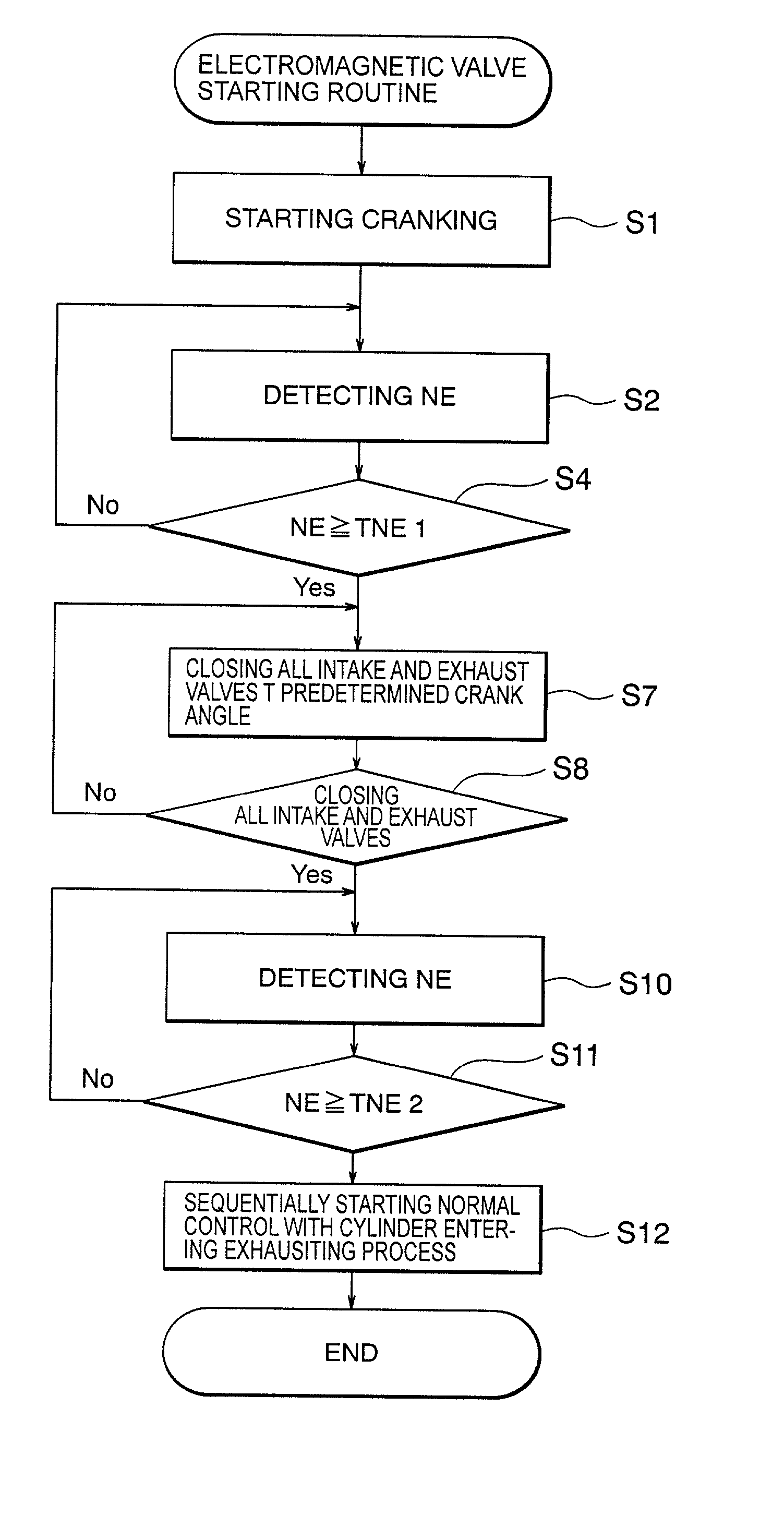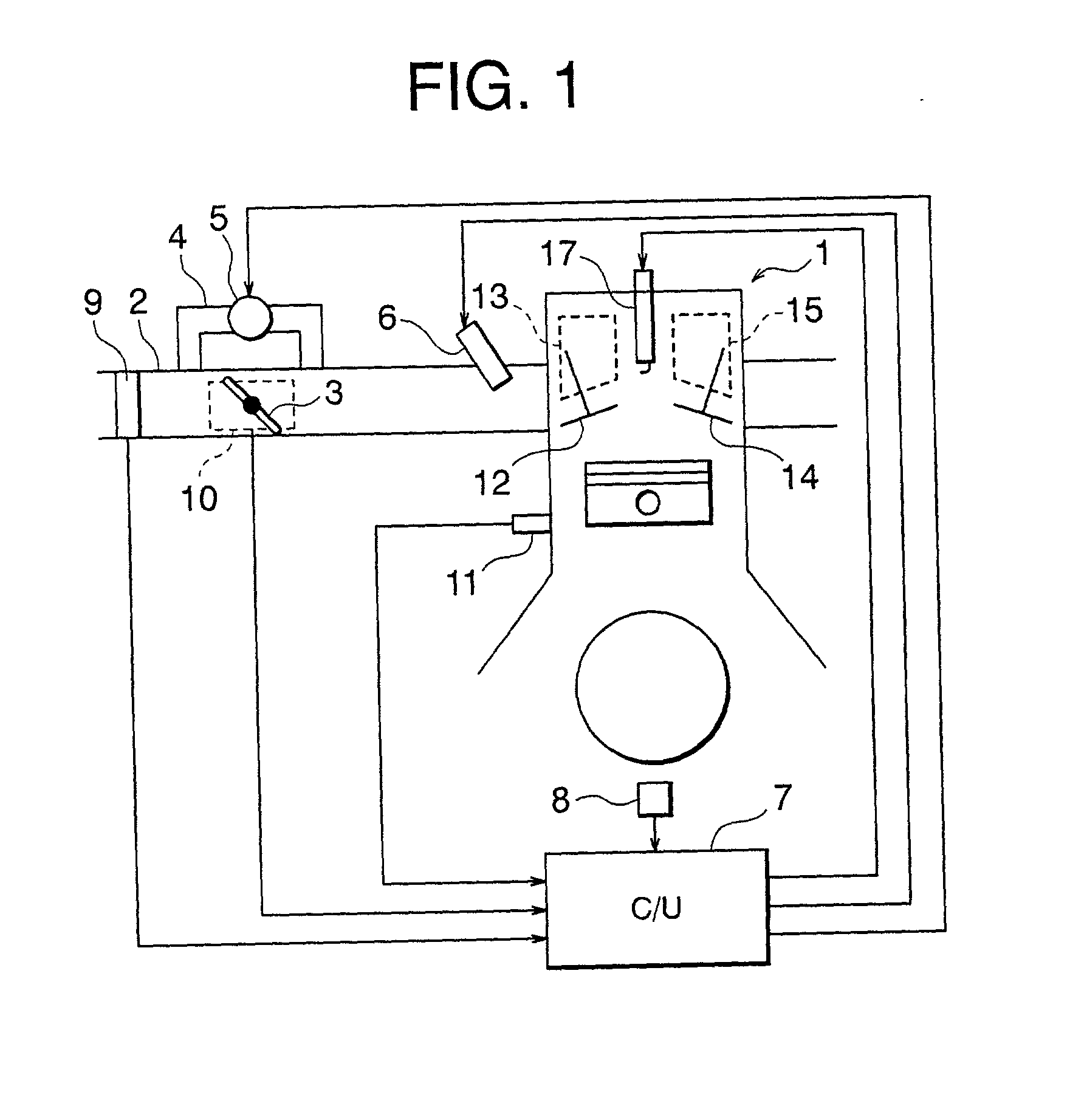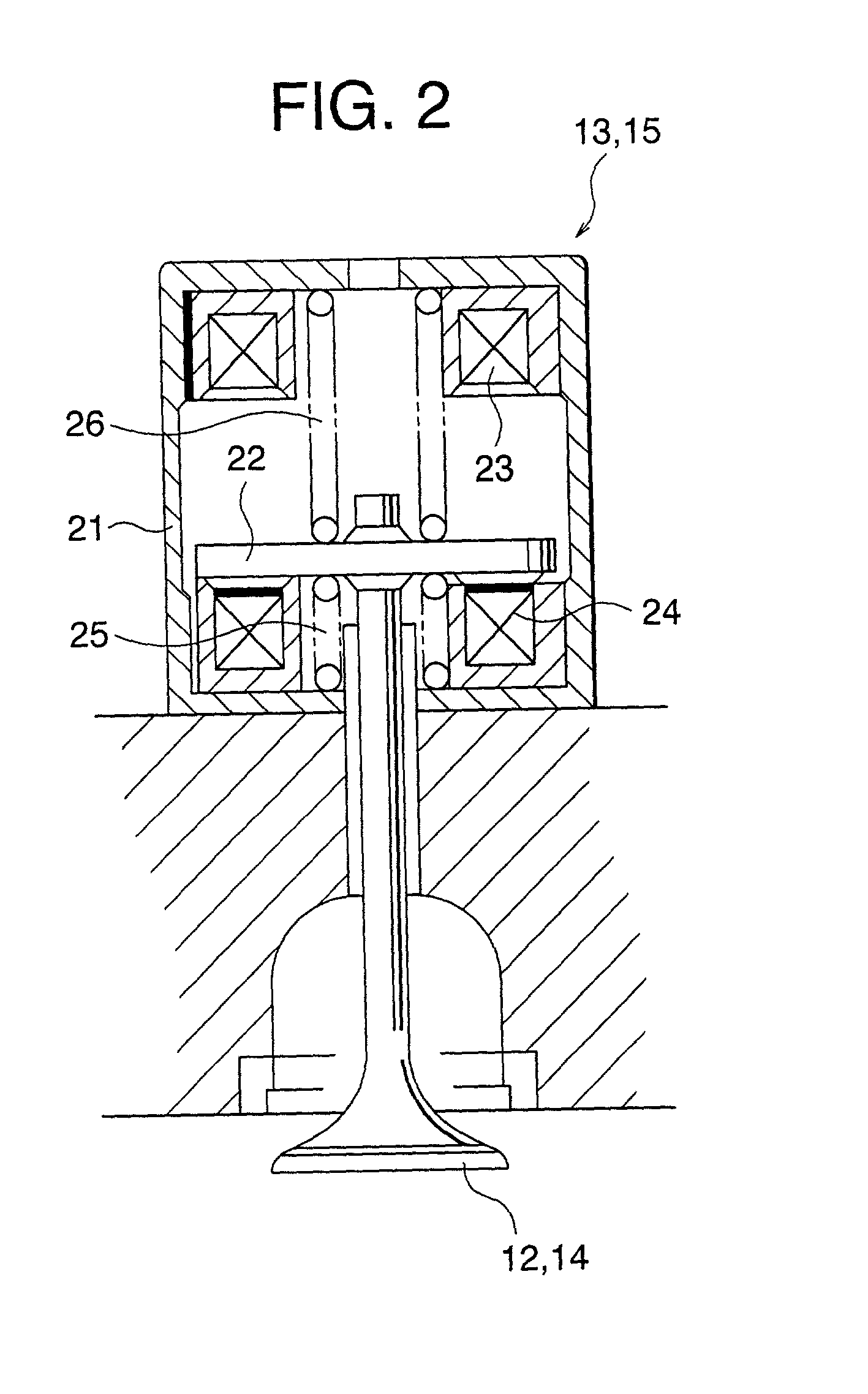Method and apparatus for controlling electromagnetic driving valve for internal combustion engine
- Summary
- Abstract
- Description
- Claims
- Application Information
AI Technical Summary
Benefits of technology
Problems solved by technology
Method used
Image
Examples
first embodiment
[0036] FIG. 1 shows a configuration of a system of an internal combustion engine according to the present invention.
[0037] In FIG. 1, an intake path 2 of a 4-cycle internal combustion engine 1 is provided with a throttle valve 3 and an auxiliary air path 4 for bypassing the throttle valve 3. The auxiliary air path 4 is provided with an electromagnetic auxiliary air control valve 5.
[0038] When the 4-cycle internal combustion engine 1 is an engine (for example, a mirror cycle engine, etc.) capable of, for example, controlling the open / close period of an intake valve 12 by an electromagnetic driving valve device (electromagnetic driving valve) 13 described later to take in the air in an atmospheric pressure and control the amount of intake air without a throttle valve, the throttle valve 3, the auxiliary air path 4 and the auxiliary air control valve 5 can be omitted.
[0039] Furthermore, the intake port unit of the intake path 2 is provided with an electromagnetic fuel jet valve 6 for e...
embodiment 2
[0066] FIG. 9 shows a configuration of a second embodiment of the present invention. In FIG. 9, the same or corresponding portions shown in FIG. 1 are assigned the same reference numerals, and the detailed explanation is omitted here.
[0067] In FIG. 9, reference numeral 28 denotes a starter motor, and receives power from a battery 30 through drive means 27 as first starter control means.
[0068] Then, the procedure of the process of the electromagnetic driving valve starting routine will be described below by referring to the flowchart shown in FIG. 10.
[0069] In step S1, the starter motor 28 is turned on, and the cranking is started. Then, in step S2, the rotating speed of the crank shaft, that is, the cranking speed NE is detected based on the output of the crank angle sensor 8. In step S4, it is determined whether or not the cranking speed NE has exceeded the first predetermined rotating speed TNE1. If the determination result is YES, then control is passed to step S6, and the starte...
embodiment 3
[0074] FIG. 11 shows a the configuration showing a third embodiment of the present invention. In FIG. 11, the same or corresponding portions as in FIG. 1 are assigned the same reference numerals, and the explanation is omitted here.
[0075] In FIG. 11, reference numeral 28 denotes a starter motor to which power is applied from the battery 30 through the drive means 27. Reference numeral 29 denotes current detection means for detecting the current provided to the starter motor 28. The drive means 27 and current detection means 29 configure the second starter control means.
[0076] Then, the procedure of the process of the electromagnetic driving valve starting routine is described below by referring to the flowchart shown in FIG. 12.
[0077] First, in step S1, the starter motor 28 is turned on, and the cranking is started. Then, in step S2, the rotating speed of the crank shaft, that is, the cranking speed NE, is detected based on the output of the crank angle sensor 8. In step S3, the loa...
PUM
 Login to View More
Login to View More Abstract
Description
Claims
Application Information
 Login to View More
Login to View More - R&D
- Intellectual Property
- Life Sciences
- Materials
- Tech Scout
- Unparalleled Data Quality
- Higher Quality Content
- 60% Fewer Hallucinations
Browse by: Latest US Patents, China's latest patents, Technical Efficacy Thesaurus, Application Domain, Technology Topic, Popular Technical Reports.
© 2025 PatSnap. All rights reserved.Legal|Privacy policy|Modern Slavery Act Transparency Statement|Sitemap|About US| Contact US: help@patsnap.com



